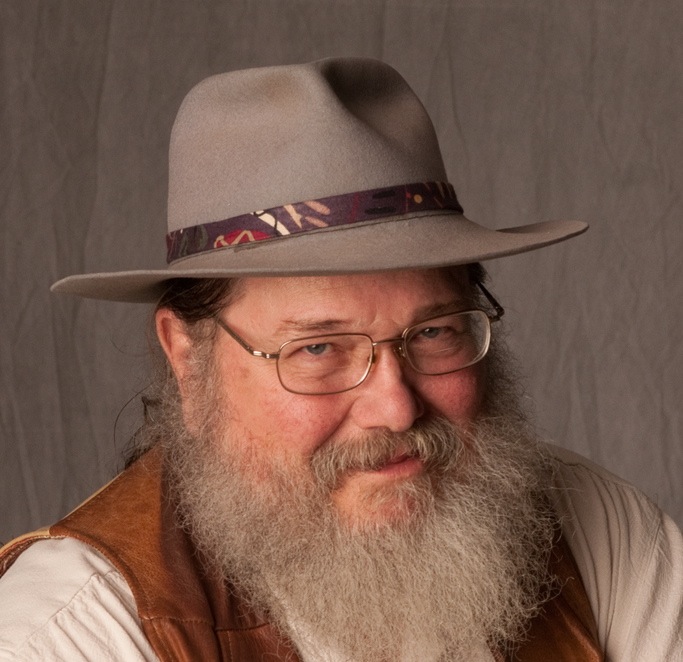I’m headed north to the Grand Canyon to interview Eric Guisse, who began carving a homestead on the parks border more than 40 years ago. Greg Hales, my pardner in crime and videographer extraordinaire pilots his truck north through ponderosa and piñon scrub. As we pass through a clearing in the forest I glimpse a large white owl perched on a branch beside the road. The bird has a round head and its milky feathers are tipped with jet black. A great snowy owl.
What situation brought this magnificent owl so far from his safe Arctic home to such arid hunting grounds? Snowy owls have reportedly been seen in unprecedented numbers this winter far south of their historical range. One was sighted on Thanksgiving at the Honolulu, Hawaii, airport. I wish I could say I saw it swoop off the branch and glide across the clearing on blunt wings as wide as a sheet of plywood and drop to snatch a mouse from the snow but I didn’t get a second glance.
Greg and I leave the paved road where the old Moqui Lodge once stood and begin a seven-mile controlled skid up and down snow-packed forest roads that finally deliver us at Highland Mary, a 14-acre copper mining claim named for Robert Burns’ mistress. Eric emerges from his workshop to greet us. He is built on the spare plan. He reminds me of the old pack saddles made of carved hardwood lashed together with rawhide. His skin is weathered and eroded by expose to the elements; muscles are evident. His grayish sandy hair is tied up behind his head and his direct eyes nail you from beneath bushy eyebrows. An epic wooly bear mustache covers his lower face. His hands swoop in broad gestures like pigeons flying in formation when he talks.
Eric was born in Switzerland. After completing his military obligation he traveled for a few years. He ended up in New Orleans where his poor English skills were offset by his fluent French. He practiced his culinary skills around the U.S. for several years. Only when he came to the Grand Canyon to work for Fred Harvey did he feel like he had found a geographical home. When Eric first saw the claim in 1973 it was just a shell of a stone building on rocky soil in a grove of giant pines but the silence and majesty spoke to him.
With his wife, Sue, he began to learn about these dry rocky acres. Rainwater from the roof was collected and stored in metal tanks. Solar panels charged batteries for all their electrical needs. They created fertile gardens protected by elk-high fences. They expanded the house, and added a greenhouse. Whenever possible they used recycled materials. Eric proudly shows us his outdoor kitchen where he prepares gourmet meals for large groups each year. “I operate by the seasons here. My year turns on August 1st,” he says. It is Swiss Independence Day. “Seven hundred years ago the Swiss decided they should be free, so I invite my friends to come celebrate and be Swiss for a day.” He looks toward his chicken pen. “We’re almost self-sufficient. Our footprint is very small. We’re living somewhat on the edge, but it’s a good edge-things to do, and people to be with. That’s kind of what it is.” Should the daily grind get him down he only needs to hike to the rim of the great canyon and sit and listen and be restored.
I first encountered the word querencia as a boy while reading J Frank Dobie’s “The Longhorns.” He stated that the vaqueros, the Mexican cowboys of south Texas, used the word to refer to the territory that wild cattle considered their home ground, the place of safety they returned to year after year to birth their calves. Often cattle would try to quit the herd on a trail drive and return to this place of security. Bull fighters use querencia to refer to the place in the ring the wounded bull goes to renew his strength and launch his next attack.
In “The Rediscovery of North America” Barry Lopez explains that querencia is “a place where one feels secure, a place from which one’s strength of character is drawn, a place in which we know exactly who we are—the place from which we speak our deepest beliefs.’’
I wonder, will the great snowy owl find a high-desert querencia, filled with a quiet peace and mice?

